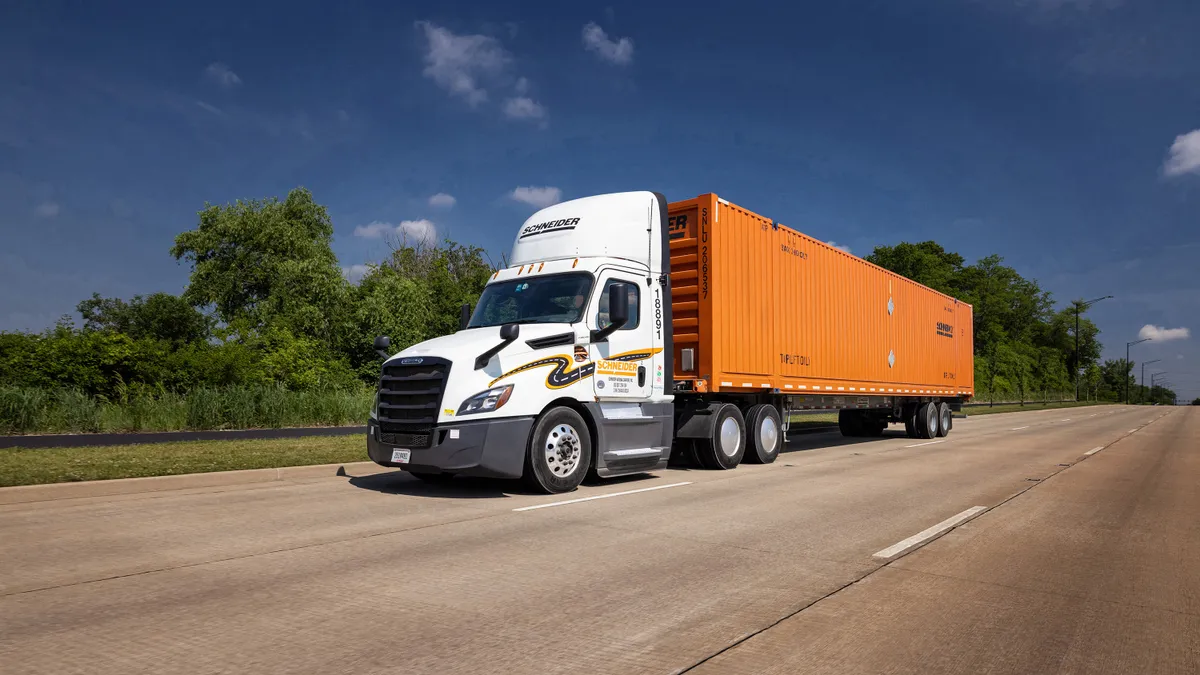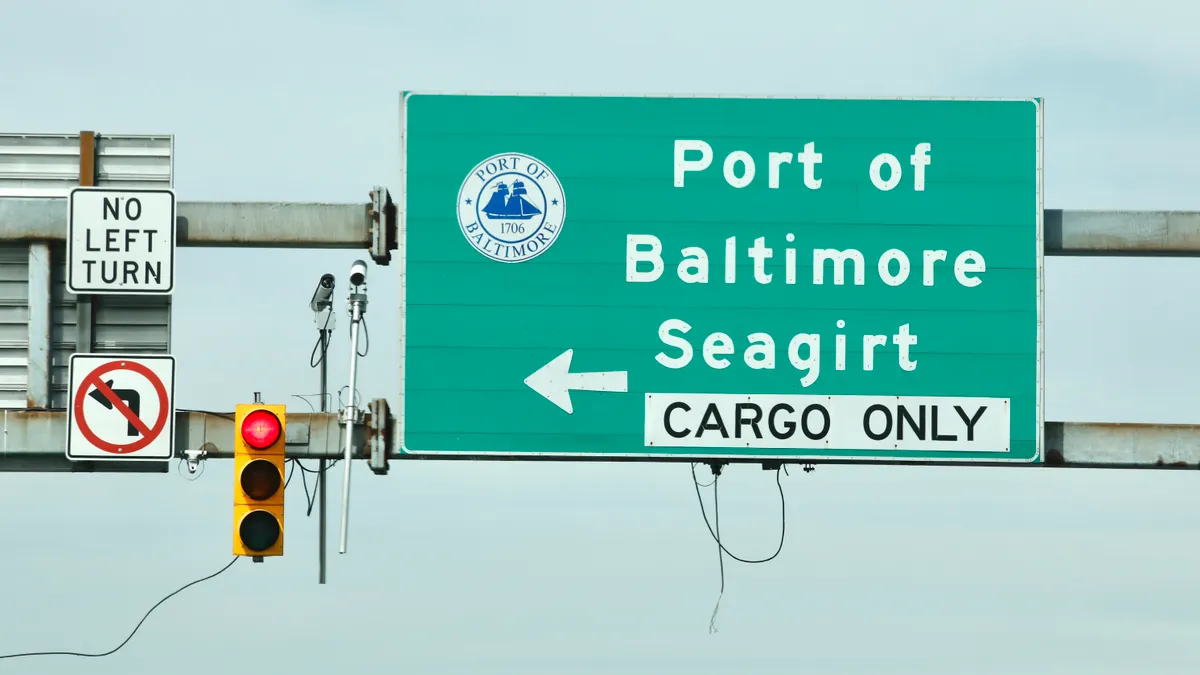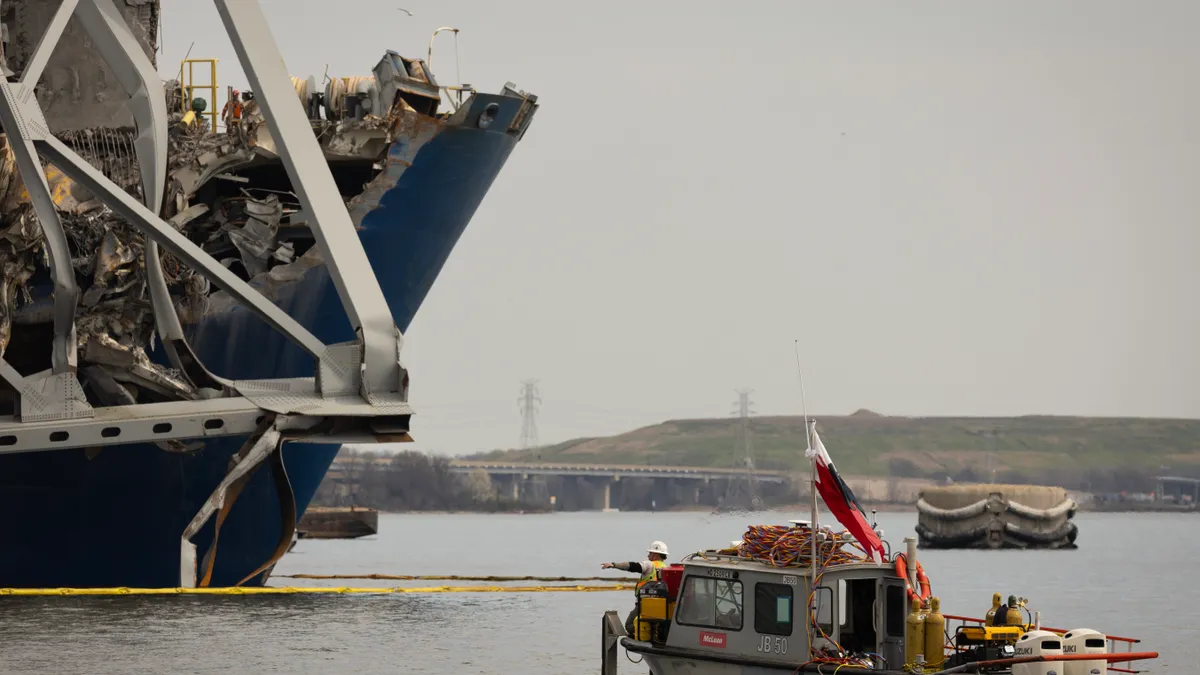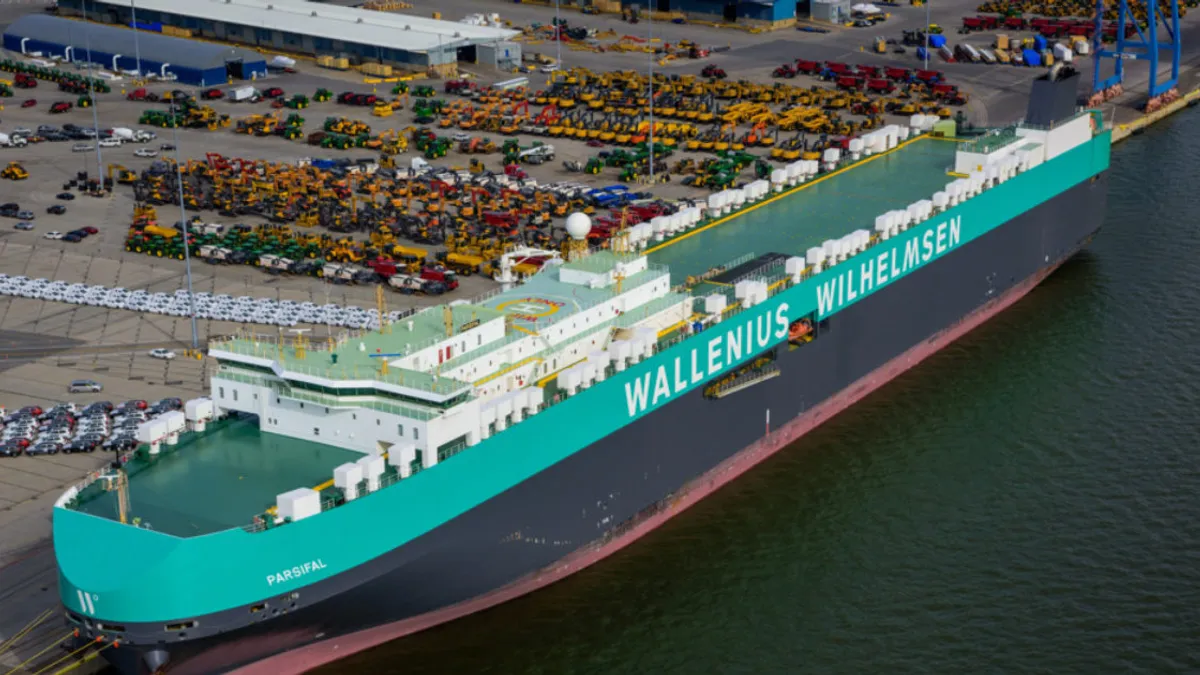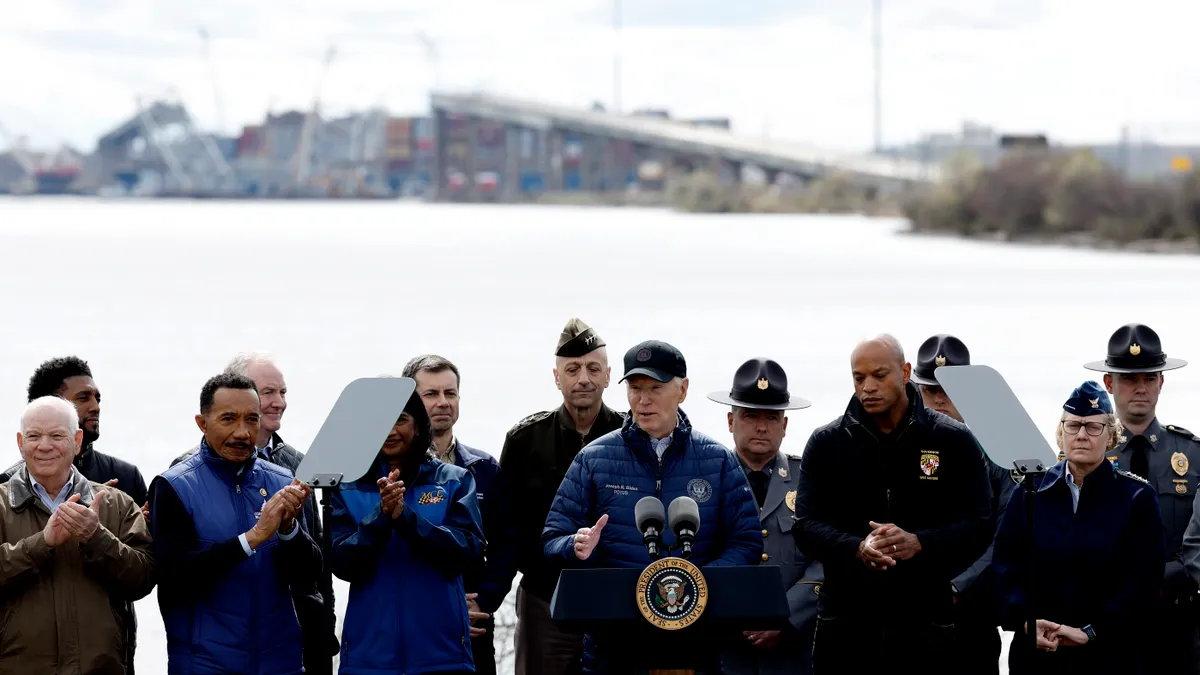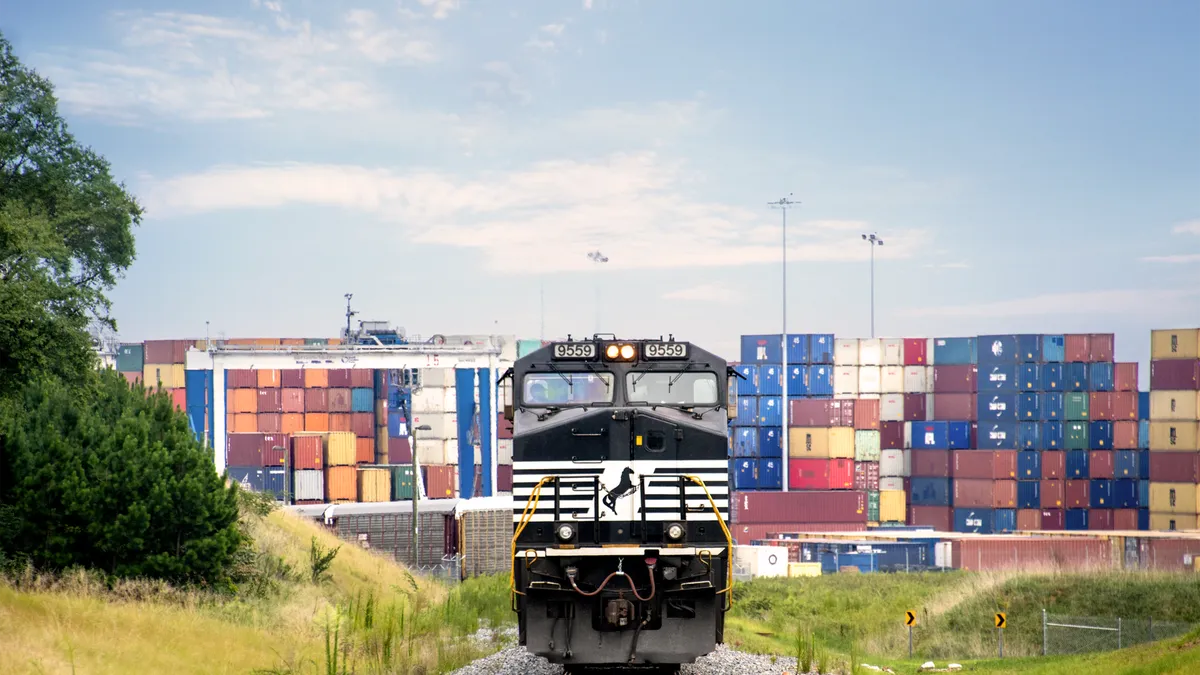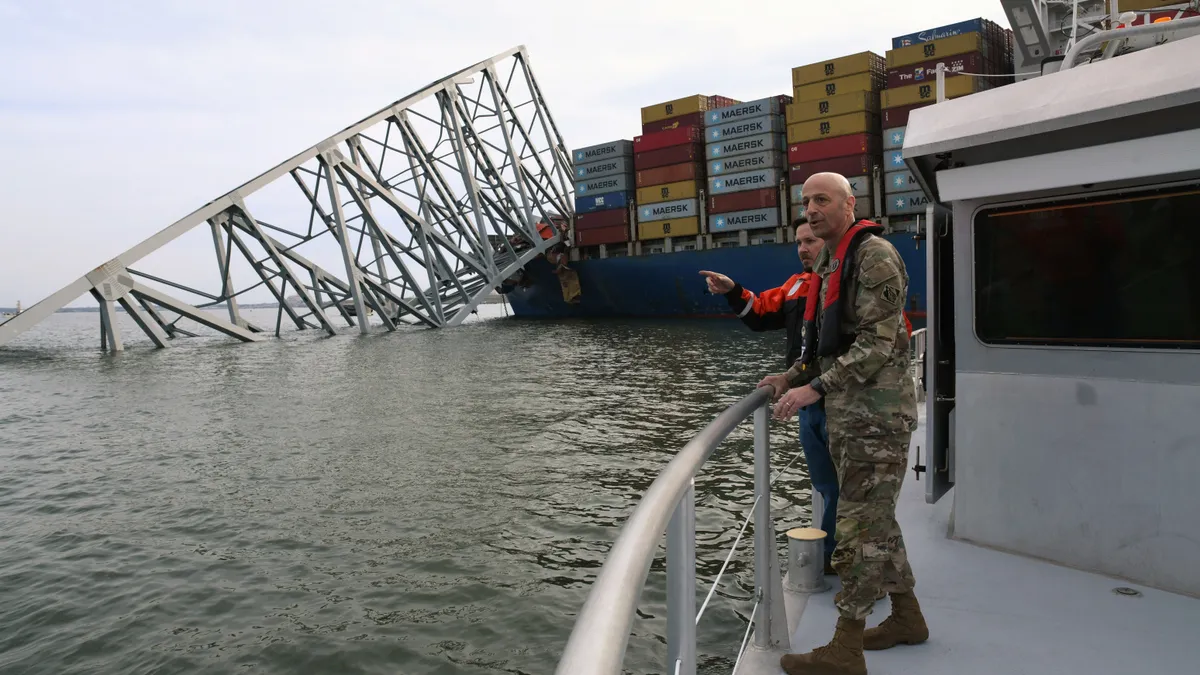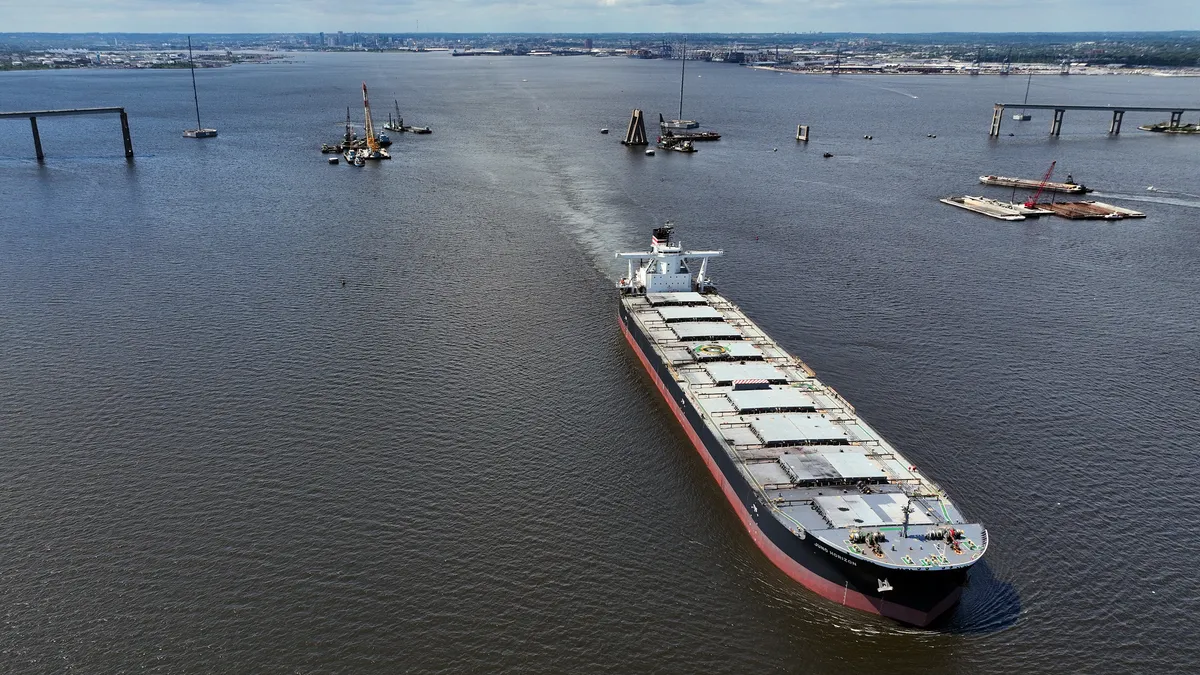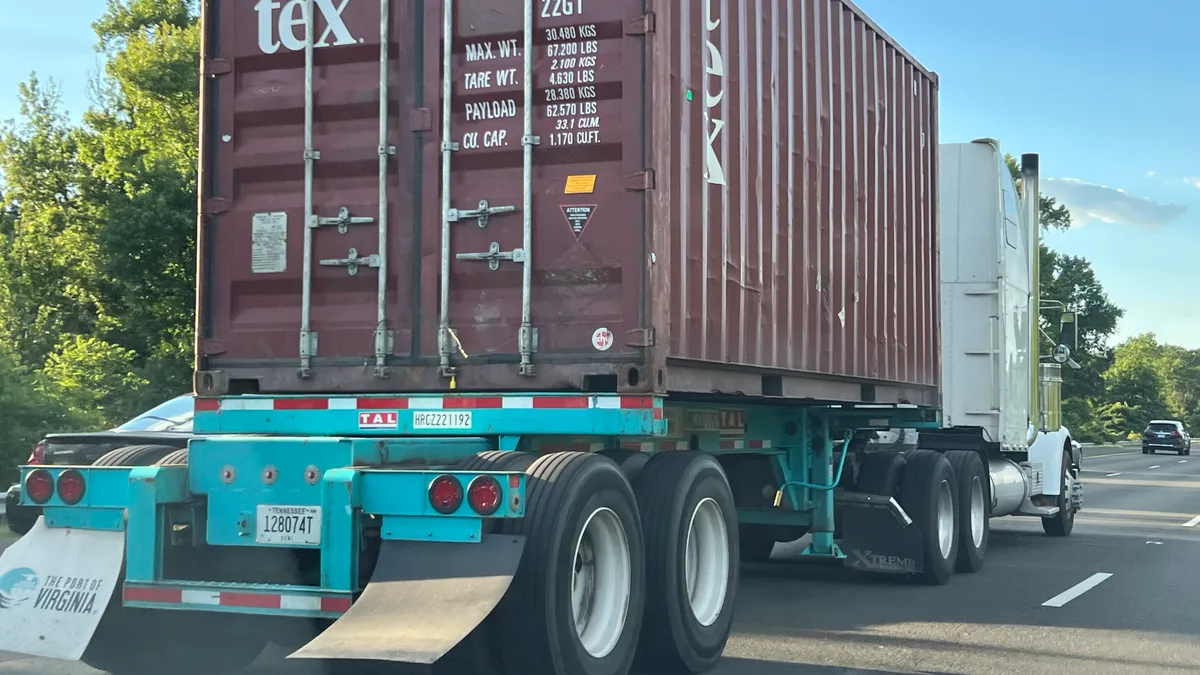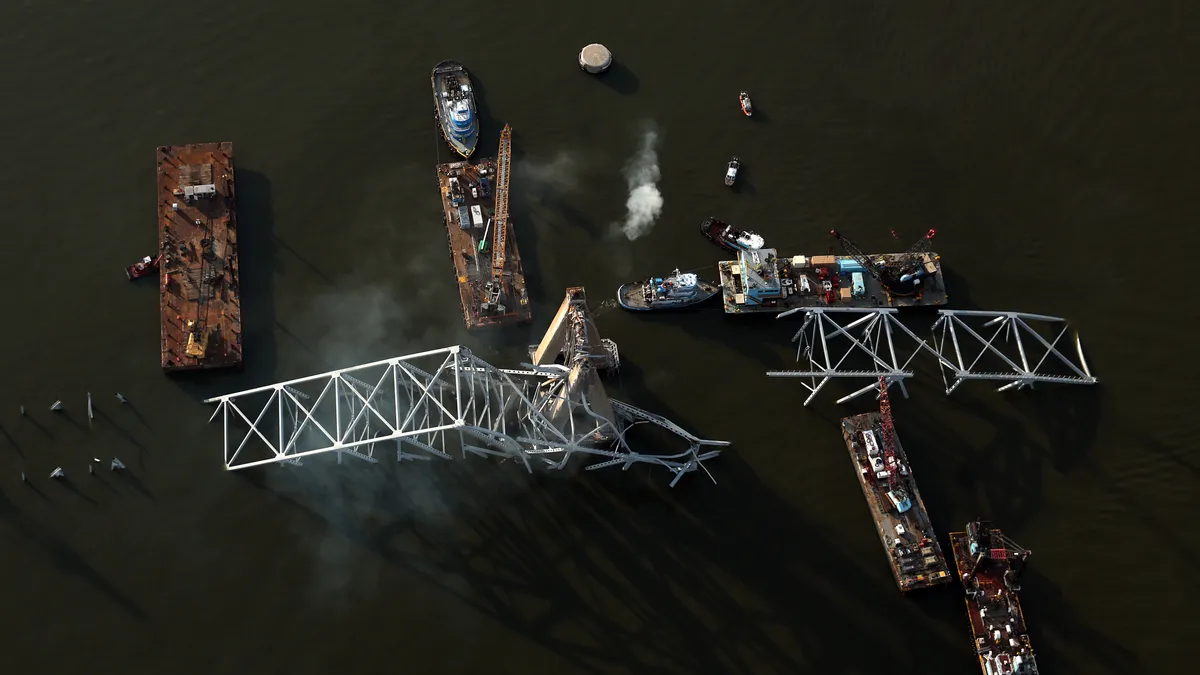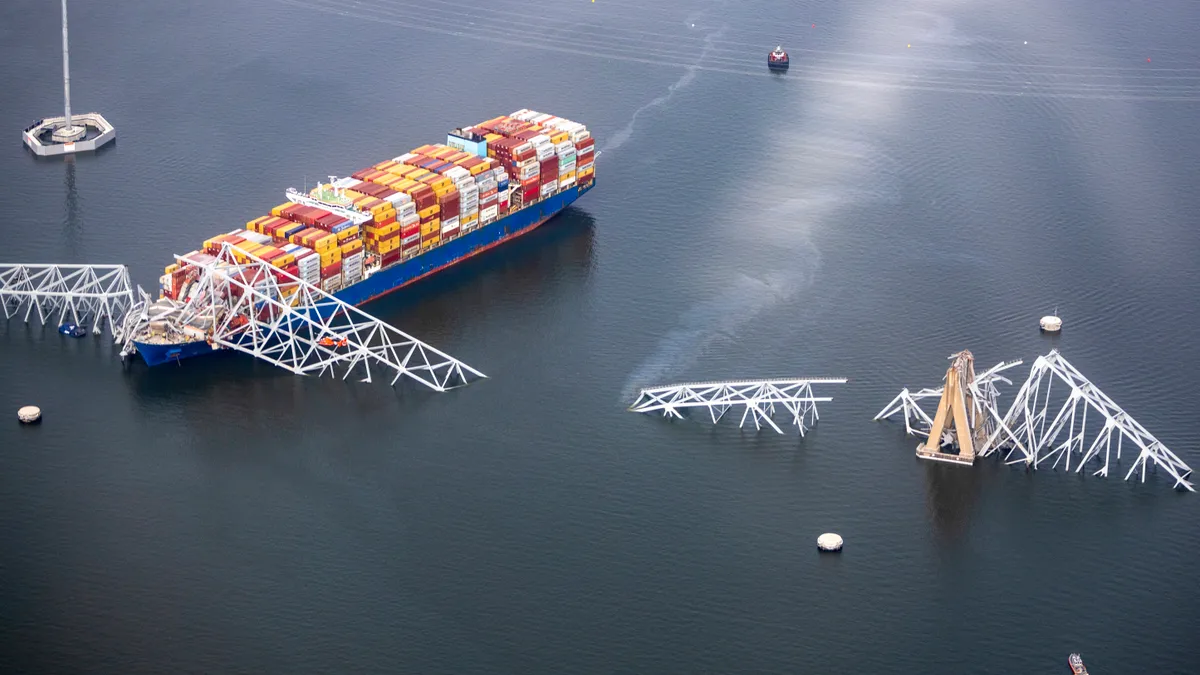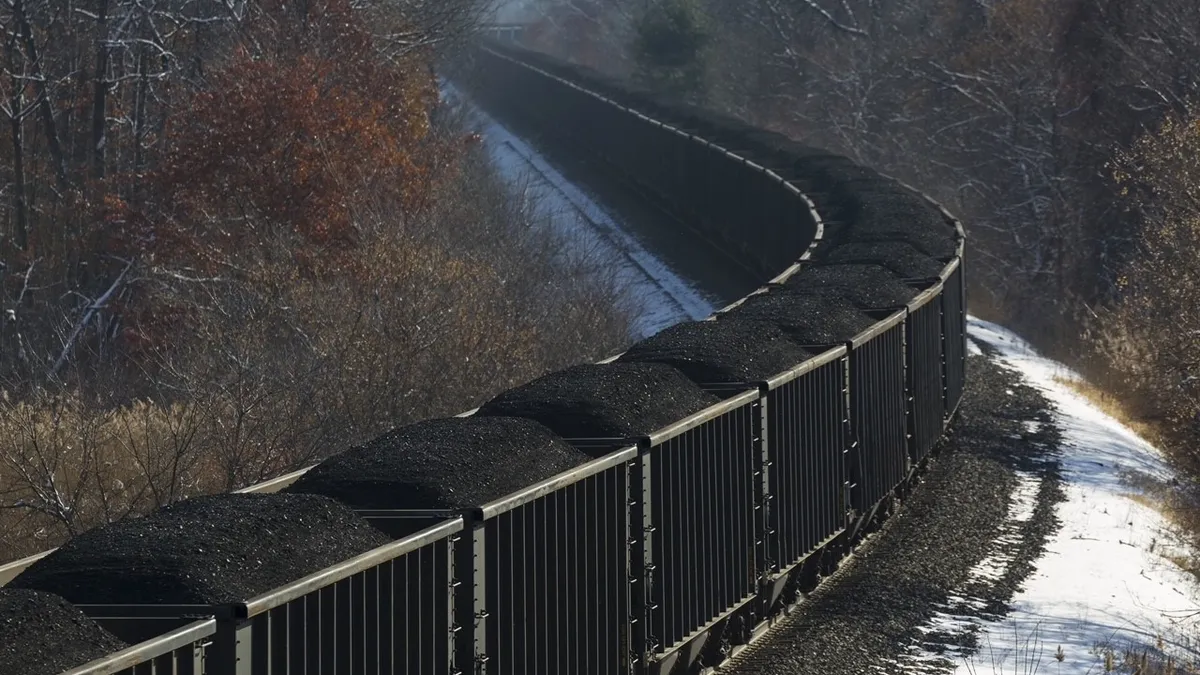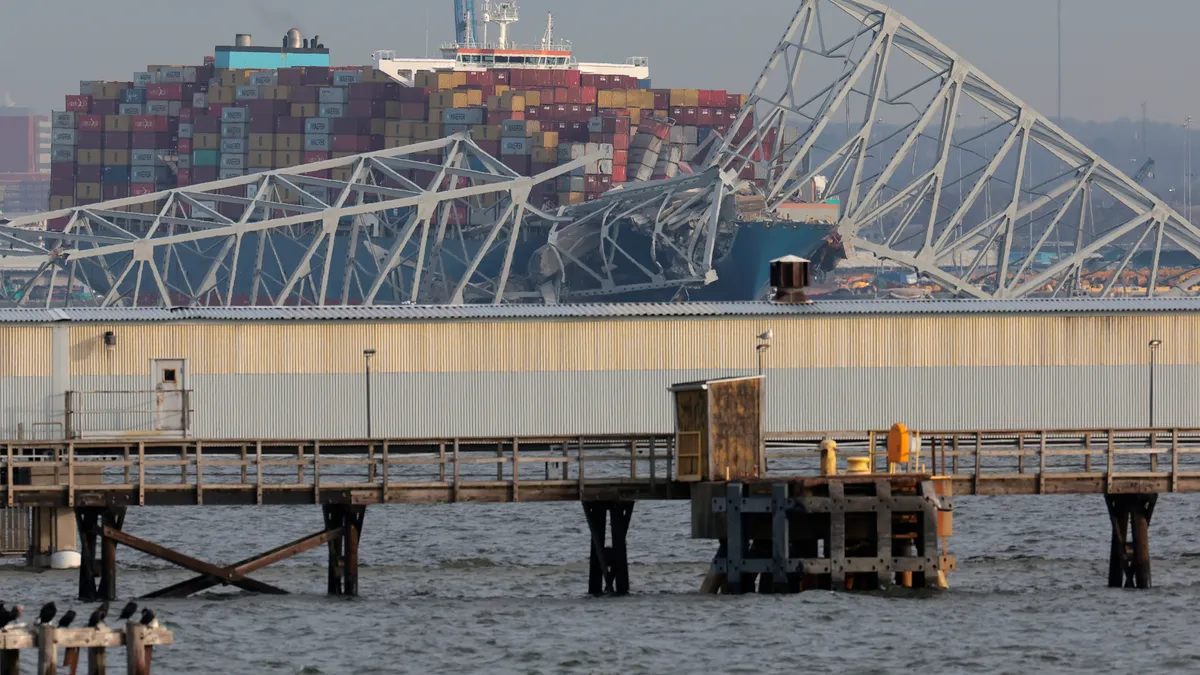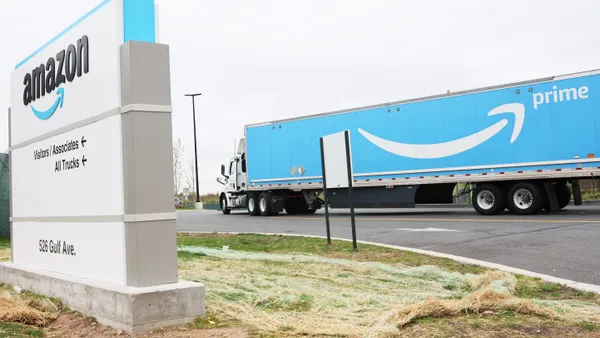When the Port of Baltimore was shut down after a cargo ship collided with the Francis Scott Key Bridge, Dan Flaherty knew what was coming next.

The Schneider National executive and his port and logistics services team soon received a rush of calls and emails from frantic shippers seeking options to reroute freight away from the disaster area.
While Flaherty said his team is well-versed in handling a crisis, the situation created by the Key Bridge catastrophe was unique.
“We haven’t seen something exactly like this in the past,” Flaherty said in an interview with Trucking Dive. The company’s VP of warehousing, dray and port logistics said severe weather or labor disputes offer early warning signs so accommodations can be made to mitigate problems.
But an abrupt shutdown of a major port meant shippers would want a quick response for both diverting freight heading to Baltimore and solutions to retrieve cargo sitting at the port awaiting delivery.
After fielding numerous inquiries from shippers, Flaherty recognized an opportunity and worked with the carrier’s marketing team to quickly develop an email campaign detailing Schneider’s catalog of logistics services including drayage and warehousing. The carrier’s first Navigating Port Disruption email went out a few hours after the incident and has been followed up with subsequent emails.
Flaherty said the response to the campaign has led to new drayage business and discussions about the carrier’s other services to existing customers. Most freight shipped with Schneider originally destined for Baltimore prior to the incident was diverted to Norfolk, Virginia, he said.
The email campaign’s positive result did not surprise Jonathan Phares, assistant professor of supply chain management at Iowa State University. He noted Schneider wisely framed its marketing in the context of the collapse to expand its customer base.
“With the channel closures and the diversion of freight taking place after the collapse, shippers are no doubt on the lookout for alternative shipping methods,” he wrote in an email to Trucking Dive. “I think it's smart for Schneider to ramp up and focus their marketing efforts to shippers who may need these services.”
Flaherty said diversion requests from Schneider customers were busiest within the first 10 days following the incident but have tapered off somewhat. While efforts are underway to reopen the port by the end of May, it may take another 60 to 90 days after that before Schneider customers resume normal levels of activity to Baltimore, he said.
Flaherty said communication is an essential part of providing good service. He said Schneider overall was pleased with its response to the Baltimore situation but also sees it as an opportunity to improve processes.
“We are developing and sort of refining our playbook around disruptions like this,” Flaherty said. “We want to make sure that we’re ready to help customers solve for those challenges.”



